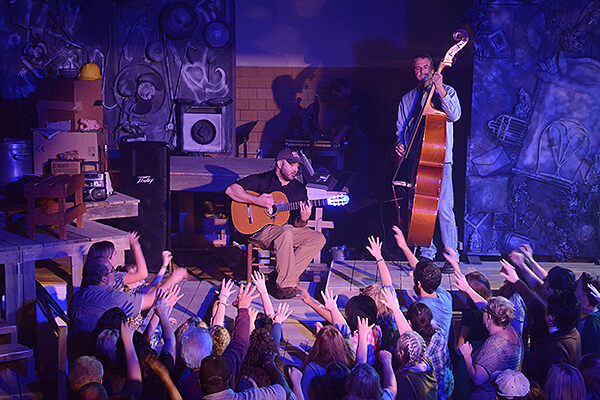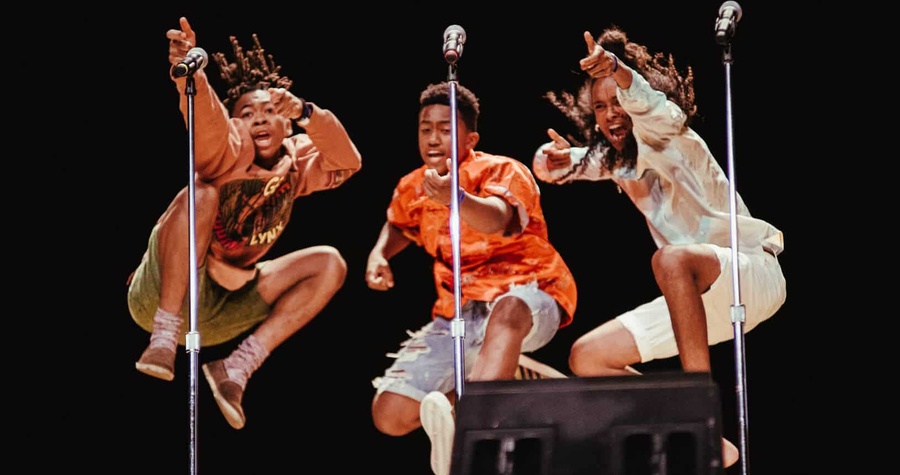When I was just 4 years old, my mother took me to see Swan Lake at the Kennedy Center. She was an early childhood educator and had just earned her master’s degree. We had little money at that point, but she was able to get tickets high in the rafters. I craned my neck to watch the floating dots on the stage, and despite my distance from them, I felt part of something much larger than myself: the shared experience with everyone in the audience, the power from the artists that moved and inspired me, the music and movements that reminded me that we are capable of grace and creating beauty. This experience changed my life, and I have dedicated my theatre career to returning the gift that the performing arts have given me. That is the life-changing power of the arts—a power that we have yet to fully tap, and a power that our society needs now more than ever.
What if, beyond providing entertainment, the arts were a social prescription to health, empathy, and healing? At a time when more Americans feel stressed, face mental health challenges, and feel more disconnected from each other than ever before, the arts can serve as a unifier and a touchstone for our humanity, directly impacting our individual and collective well-being. But like healthcare itself, the arts are not accessible to all. Instead, they have become limited to those who can afford it. A benefit that should be afforded to all has become a luxury for just a few. This must change.
My current position as one of the co-artistic leaders of One Nation/One Project is giving me some hope for my chosen profession. Through our national project, Arts for EveryBody, I have been given a bird’s-eye view of the ways artists from rural Appalachia to the highlands in Honolulu are connecting community health centers, art centers, and city government and leveraging their joint powers. I have seen firsthand how artists are being employed in health centers and how healthcare providers are prescribing arts practice as a way to improve community health. They are cultivating a generation of artmakers who are demonstrating the power of art without the limits or constraints of institutions. Their work feeds my soul.
In the Bronx, Urban Health Plan’s (UHP) Arts Desk is one of the first arts-led social prescribing prototypes in New York City. In partnership with local organizations and artists, UHP offers their patients a chance to participate in provider-prescribed art experiences in their neighborhoods, with a selection of all art genres including visual arts, dance, music, theatre, spoken word, literary, horticulture and culinary arts. The UHP Arts Desk also leads the curation of a physical gallery and performance site located within the health system’s main site, showcasing the interdisciplinary arts engagement of their patients and staff.

In Harlan County, Ky., Higher Ground, a community arts organization, brought together municipal leaders and Cloverfork Clinic to integrate the arts into rural healthcare delivery via a new mobile health clinic, social prescribing, and other arts programming. In this historic coal mining community, the collaborative is bringing their most remote residents quality care and coordinating an arts and music festival with a new original play performance in July 2024.
In Oakland, Calif., which has seen a recent rise in crime and violence, the organizations Youth Speaks and Edutainment for Equity recently led the charge to produce the latest of Life Is Living Festival, a 15-year multi-modal Black-led arts and culture festival in West Oakland. Using hip-hop as a vehicle, this festival honors the legacy of the Black Panther Party for Self Defense in celebration of their groundbreaking survival programs. Life Is Living builds sustainable collaborations with health agencies and wellness groups to address the increasing levels of suffering in the city.
And in Chicago, the Inner-City Muslim Action Network (IMAN) and local partners in the Englewood neighborhood are building on their ongoing work through their holistic Federally Qualified Health Center to reactivate an abandoned lot, the Go Green Griot Plaza, a closed school, and a closed public transit station—all located in health deserts. This reparative and healing-informed intervention approach aims to reduce the greatest urban life expectancy gap in the country and celebrate their communities’ rich, brilliant, expansive traditions through art.
These are just a few examples of the work artists are already doing that we can build upon. But we must invest in both the vision and the artists themselves. We know there is both interest in and resources for arts as entertainment. Despite setbacks for performing arts (i.e., theatre, dance, and opera companies) brought on by the pandemic, the overall arts economy in 2021 represented 4.4 percent of GDP, or just over $1.0 trillion—an all-time high.
What I learned that day as a young child in the theatre is that beyond economic value, the arts provide even greater currencies: health and healing. To reap these benefits, we must nurture and support artists, who, despite little resources, continue to find ways to make positive impacts in our communities. We must urge our local governments and healthcare organizations to partner with arts organizations, looking to these existing projects as models to be scaled and customized to local needs.
And we must ensure that we create this interdisciplinary model in a way that honors what the arts and healthcare should be: a basic human right.
Nataki Garrett, an accomplished executive artistic leader and acclaimed filmmaker and theatremaker, last served as artistic director of Oregon Shakespeare Festival. She now serves as co-artistic director for One Nation One Project/Arts for EveryBody, in partnership with Arts for EveryBody founders and co-directors Lear deBessonet and Clyde Valentin.


